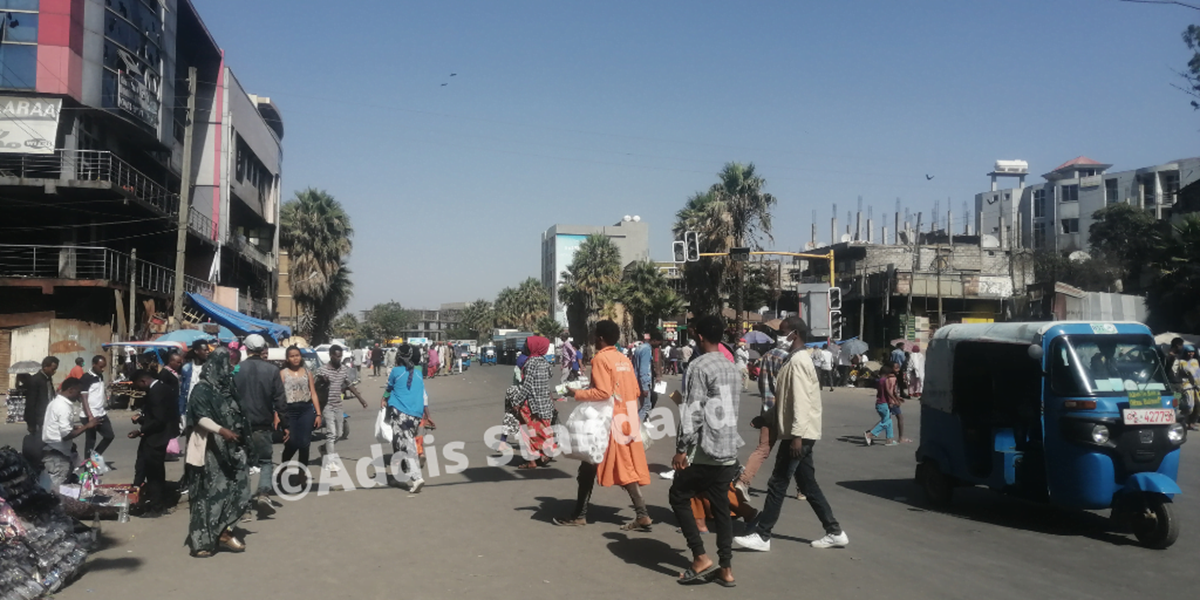News: 22 million people in Ethiopia estimated to require humanitarian assistance in 2022: UN

Addis Abeba, December 21/2021 – Humanitarian needs remain high in several parts of Ethiopia with at least 20 million people requiring some form of humanitarian assistance until the end of the year, the UNOCHA latest report said.
In northern Ethiopia (Afar, Amhara, Tigray regions), the number of people depending on emergency food assistance has increased from 8.1 million in August as indicated in the 2021 Humanitarian Response Plan Mid-Year Review to an estimated 9.4 million in November according to WFP assessment.
Due to the effects of the ongoing conflict, the Amhara Region registered the largest increase with 3.7 million people in urgent need of assistance. The humanitarian needs in Ethiopia are expected to remain high through 2021 and into 2022 due to conflict, drought, flooding, disease outbreaks and desert locust infestation. According to the Global Humanitarian Overview released in early December, an estimated 22.3 million people will be targeted for humanitarian assistance in Ethiopia in 2022.
The Global Humanitarian Overview is an annual document that provides a snapshot of acute crises around the world as well as projected future trend. It aims, amongst others, to support large-scale resource mobilization effort.
Urgent action needed to reverse deepening drought impacts in southern and eastern Ethiopia
The continuous drought-like condition in the south of Oromia and Somali regions is of particular concern. According to a recent analysis1 from the Famine Early Warning System Network (FEWS NET), the levels of acute food security in crisis phase and emergency phase (IPC Phase 3 and Phase 4 respectively) are currently high in southern and eastern Ethiopia. This is explained by the consecutive failed rains in the affected areas since late 2020, namely, poor rainy season in October-December 2020 followed by poor rainy season in March-May 2021 and an extremely dry October-December 2021 season. As a result, pastoralist and agro-pastoralist communities in these areas are suffering from acute water shortage, failed harvest and deteriorating livestock body conditions, which led to reduced income and food stock.
According to Ethiopia’s National Central Statistics Agency for example, goat prices in October were about 35 per cent lower than 12 months earlier in southeastern regions, due to poor animal body conditions. According to FEWS NET’s: “livestock herd model suggests goat and sheep herd sizes could drop to 20-50 per cent below normal […] in several pastoral livelihood zones. In a worst-case scenario […] excess livestock mortality would further accelerate in the subsequent January/February 2022 dry season”. Livestock migration to better-off areas in search of water and pasture has also been reported.
Early action to prevent the worst impact of drought as well as scaling-up current response are critical. In a joint press statement3 on 7 December, the World Food Program (WFP) and the President of the Somali Region H.E. Mustafa Omer warned that up to 3.3 million people in the region will fall into acute hunger in the next three months if drought response measures are not taken urgently to reverse the deepening food insecurity and malnutrition. Some 2.2 million people are currently facing water shortage and need water trucking support and 173,000 malnourished children under five years and pregnant and breastfeeding women require nutritional support. Somali regional authorities announced that 200 million Ethiopia Birr (approximately US$4.2 million) were approved to support for humanitarian response activities, including water trucking and the provision of animal feed but urgent additional funding is required to avert the worst of the drought impact.
The OCHA-managed Ethiopia Humanitarian Fund (EHF) is currently finalizing its second standard allocation that would partly provide critical life-saving assistance to most acutely vulnerable groups affected by the drought in Somali and Oromia regions. The US$2 million allocation will focus on integrated health and nutrition interventions. Special attention will be given to children under five years, pregnant and lactating women, people with disability and elders. In parallel and in complement, the Central Emergency Response Fund (CERF) had allocated earlier in June $5 million for drought response in Oromia and Somali region focusing on Health, Nutrition and WASH sectors; while another $5 million has recently been allocated for specific drought responses in the same geographical areas for WASH and agriculture activities, which are just starting.
At least 1.5 million people were newly displaced across the country in 2021
Currently, there are an estimated four million internally displaced people (IDPs) across Ethiopia, the majority of whom were forced to leave their homes due to conflict in search of safety and assistance. This is an increase from the 2.7 million estimated IDPs as of early February 2021 according to the 2021 Humanitarian Needs Overview (HNO).
At least 60 per cent of the IDPs in the country are living within host communities. Amongst the recent displacements reported across the country is the IDP influx from western Tigray since the last week of November. A multi-sector assessment conducted by humanitarian partners on 24 November indicated that more than 10,000 people have arrived in Dedebit Town in North-Western Tigray. This number continued to grow since the assessment. The displaced people are mostly women, children, elderly, and sick people, who fled Western Tigray with no or limited supplies. Humanitarian partners have kick-started multisectoral humanitarian response following the assessment, including food, water trucking, sanitation and hygiene non-food items, although the response is hampered by operational constraints.
Similarly, large scale displacement continues to be reported from conflict-affected areas in Amhara Region due to ongoing insecurities. As of the end of September, more than 542,000 people were displaced in Amhara, and more than 255,000 people were displaced in Afar. Please see the latest Northern Ethiopia Situation Report. Dispatch








